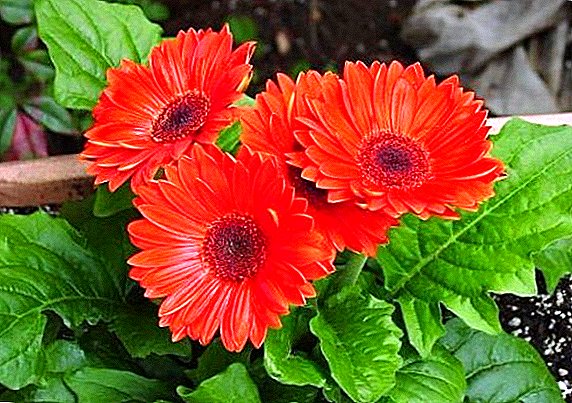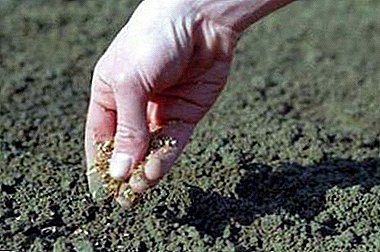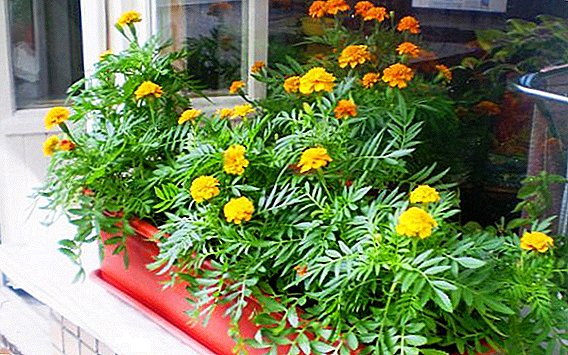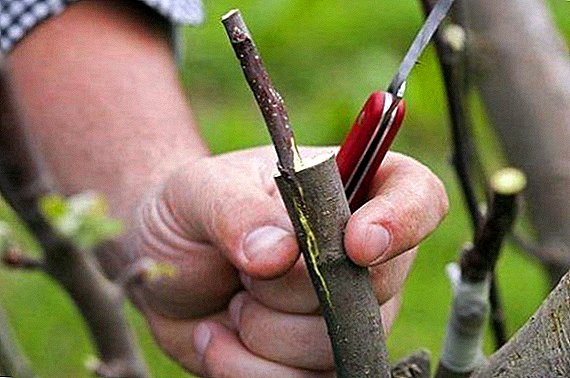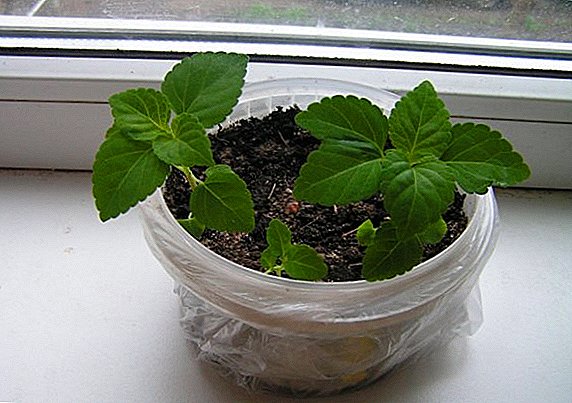 Sage, also known as Salvia, is a genus from the family of Sacred Groves, which includes perennial herbaceous plants and shrubs.
Sage, also known as Salvia, is a genus from the family of Sacred Groves, which includes perennial herbaceous plants and shrubs.
Representatives of this kind can be found in the Old and in the New World.
Today we will figure out whether it is possible to grow sage on the windowsill and what nuances should be taken into account.
Should I Grow Sage in a Flower Pot
 Many people do not have their own plot, or there is not enough space for growing all the necessary things. In this case, there is a very simple way out - you can grow sage in a flower pot at home.
Many people do not have their own plot, or there is not enough space for growing all the necessary things. In this case, there is a very simple way out - you can grow sage in a flower pot at home.
This plant will decorate your interior, will always be within reach for your dishes or other needs, no need to go anywhere behind it - neither to the store, nor to the garden, you will be confident in its quality and significantly save.
In addition, sage will turn green on your window all year round, regardless of the season, which would not have been possible in the open field. Based on the foregoing, many will find it beneficial to grow sage at home. After all, this is just a storehouse of useful properties for all occasions.
Important! Due to the strong aroma that can “muffle” the basic taste of a dish or drink, the use of sage in cooking should be moderate. Add spice gently, in minimal quantities, literally at the tip of the knife.
What types of sage suitable for growing on the windowsill
All species of this plant have their advantages and disadvantages. Although preference is often given to species such as sage and sage nutmeg, but almost every type of salvia is suitable for growing at home, on the window. It is easier to grow low, compact forms. 
Salvia officinalis refers to perennial shrubs or herbaceous plants. It grows up to 75 cm. Oblong, pubescent leaves of gray-green color are located opposite. Blue-violet flowers bloom in June. This is a thermophilic, drought-resistant, undemanding in the form of care. Used as a honey plant, as an ornamental plant, used in cooking and, of course, in medicine.
Clary - This is a shrub. Reaches meter height. Large wrinkled leaves grow on long petioles. Pinkish, white or lilac flowers are collected in false whorls. Since this type of sage can be grown only from seeds, it is worth paying attention that fruit ripening occurs in August-September.
Used for flavoring in the confectionery, alcoholic beverage industry, in cooking. Very decorative look. It has medicinal properties, although not as pronounced as that of the sage.
Did you know? For many years, there was no qualitative classification of sage, it was extremely confused and consisted of more than 2000 taxa. Today, according to The Plant List, the genus consists of 986 species.

Features planting sage at home
To grow sage at home, you should take into account some of its features. Although the plant is not capricious, but it will help when planting, choosing a place, a pot and soil.
How to choose a place for home sage
Salvia is light-requiring, prefers sunny, bright places. In hot climates, a slight darkening is allowed. South, western windows will do. If it is not possible to provide such a place, it is advisable to use fluorescent lamps. Otherwise, salvia will grow thin, high, sluggish, will often suffer from fungal diseases and lose essential oils, which will make it less fragrant. A draft is also not allowed in the room, and the temperature should not be below + 20-25 ° C.
Important! Sage sensitively reacts to changes in the growing environment, loves peace, so do not move the plant pot to a new place unless absolutely necessary.
Pot requirements
 Sage has a well-developed root system, therefore preference should be given to a large pot, perfect 10 - 15-liter capacity. So this plant will feel good and grow quickly.
Sage has a well-developed root system, therefore preference should be given to a large pot, perfect 10 - 15-liter capacity. So this plant will feel good and grow quickly.
If initially it is not possible to plant sage in such a pot, then take at least one and a half liter containers and transplant as soon as possible (it is better to replant in spring or autumn). If you choose a clay pot instead of a plastic pot, you will need to water more often.
How to prepare the soil for planting sage
Sage fit fertile, loamy, well drained soils rich in nitrogen. You can use the substrate for cacti with the addition of perlite and vermiculite, or use a universal substrate for indoor plants with a suitable level of acidity (6.0-6.5).
Sage grow comfortably with parsley, oregano, thyme, marjoram.
Planting sage at home
 Sage can be grown at home vegetatively (cuttings) or by planting seeds at home.
Sage can be grown at home vegetatively (cuttings) or by planting seeds at home.
In the first case, it is necessary to cut a 10 cm long sprig. Remove all small leaves and processes. Stalk almost completely placed in the water and wait. After two weeks, roots will appear (2-3 cm), and you can plant the plant in the soil.
In the second variant, select high-quality, almost black seeds 3 mm wide. Seeds can not be pre-processed, but can be soaked or kept in the fridge for 24 hours. Next, place them 2-3 mm in a loose, rich, pre-moistened soil.
Provide a temperature of + 20-25 ° C and good lighting; water regularly but moderately. After 2-4 weeks, the seeds will sprout. Since sage loves light and heat, the best time to sow it is the end of spring.
How to care for sage "on the window"
Sage does not belong to whimsical or capricious plants, just follow a few simple rules when caring for it, and then you will be able to grow a beautiful bush on the window of your house.
Peculiarities of home watering and spraying
Sage loves moisture, it is often necessary to spray it and make sure that the substrate is wet (plentiful but rarely watered). Soft water is optional. Once a month, put the plant in the shower. Do not overdo it, with excessive watering the plant will grow with a less pronounced aroma or, in the worst case, its roots will rot.
Do you need feed
 This plant requires regular feeding, for the first time - in early spring.
This plant requires regular feeding, for the first time - in early spring.
During flowering, in summer, sage is fed with mineral organic fertilizers with an interval of 10-15 days.
Did you know? Sage has been cultivated since the time of the Roman Empire, and its other name, salvia, comes from the Latin salvus, healthy, unharmed.
How to form a sage bush, pruning plants at home
From the second year of life, in the spring, you can start cutting the plant regularly (once a month and a half). With the help of a haircut, you can give sage any shape. This will ensure the emergence of young shoots and good bushiness. Pruning is not carried out immediately before flowering. Use extremely sharp tools.
In addition to forming trim, it is also worth removing faded buds and dry branches as needed.
Sage collection and harvesting
 Although they use not only the leaves, but also the inflorescences and the roots of sage, but at home they often collect and harvest just the foliage, which they begin to cut from the bottom. Do not cut too much and often, so as not to harm the plant. It is advisable to collect before flowering, and the last - no later than October.
Although they use not only the leaves, but also the inflorescences and the roots of sage, but at home they often collect and harvest just the foliage, which they begin to cut from the bottom. Do not cut too much and often, so as not to harm the plant. It is advisable to collect before flowering, and the last - no later than October.
Wash collected material from dirt and dust. Bundle and hang. Choose a warm place, well ventilated, without direct sunlight. After drying, store sage in an airtight container for not more than a year.
As you can see, sage is a great option for a pot, and now you know how to grow it at home, how to plant and care, how to collect it. Apply a little effort and enjoy the beauty, aroma and weight of the beneficial qualities of this amazing plant.





